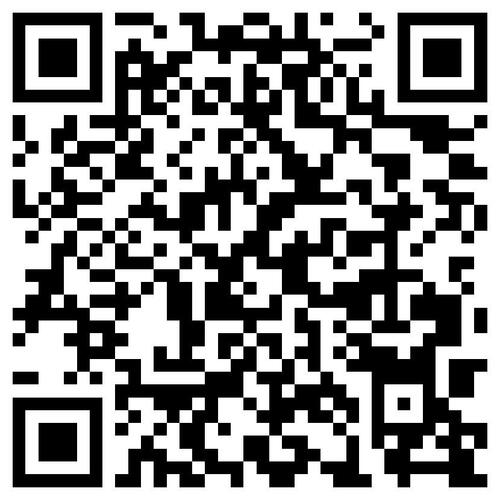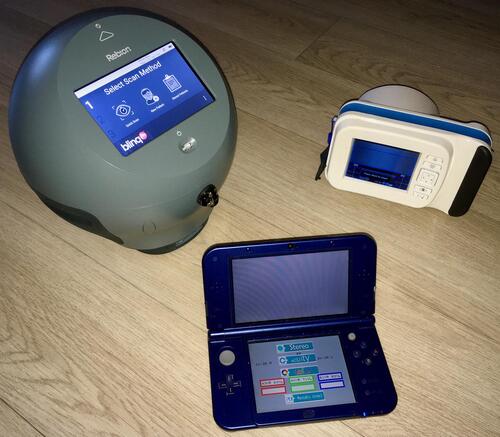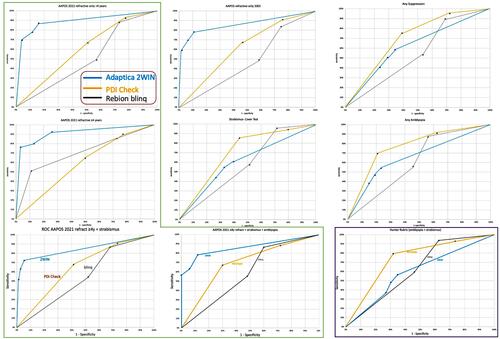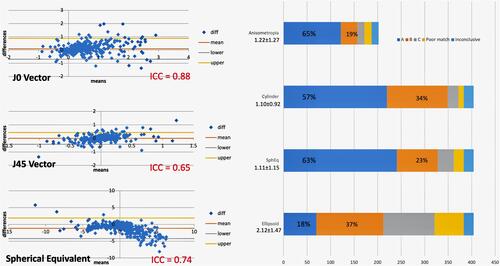Figures & data

Table 1 Gold-standard exam criteria of amblyopia risk factors
Table 2 Compared and contrasted aspects of the electronic vision-screening devices
Figure 1 Three vision-screening devices: Rebion blinq birefringent binocular foveation scanner (upper left), Adaptica 2WIN infrared multiradial autorefractor (upper right), and PDI Check dynamic forced-choice vision-screening game on the Nintendo 3DS (bottom).

Figure 2 ROC curves for amblyopia screening. Rebion blinq (gray), Adaptica 2WIN (teal blue), and PDI Check Nintendo 3DS game (orange) performance on detecting high prevalence of amblyopia risk factors and actual amblyopia and strabismus. Of the various exam outcomes, AAPOS 2021 outlined in green on the left and Bosque–Hunter rubric outlined in purple at lower right. Commonly referenced AAPOS 2003 (older triad of 2013) and aspects of manifest strabismus (cover test >8 prism diopters and “any” cases with prior strabismus surgery or chemodenervation) and diminished binocularity are also included.

Figure 3 Refractive comparison between Adaptica 2WIN and optimal refraction. Bland–Altman plots with intraclass correlation (ICC) for vector-transformed astigmatism (J0 and J45) and spherical equivalent (left). ABCD ellipsoid spectacle comparison (right) for anisometropia, astigmatism, spherical equivalent (SphEq), and overall combined ellipsoid. Means ± SD given. The bar chart shows the proportion and number of patient/eyes for which 2WIN scored an A match (blur <1 logMAR), B match (blur 1–3 logMAR), C match (blur 4–6 logMAR), and poor match (7 logMAR and worse) and inconclusive photorefraction results.

Figure 4 PDI Check near results compared to examination. Linear correlations far left, Bland–Altman plots center for stereo (top row; log arc seconds), logMAR visual acuity, and intereye difference (bottom row, logMAR). On the right, PDI Check mean, monocular trichromatic isoluminance gray cone is compared to exam results from Ishihara orange–pink vs gray “35” and “96” plates.

